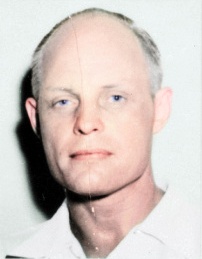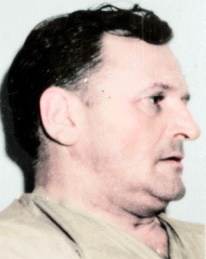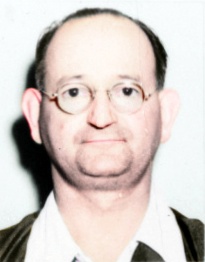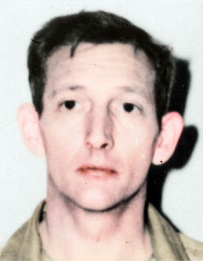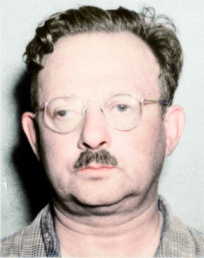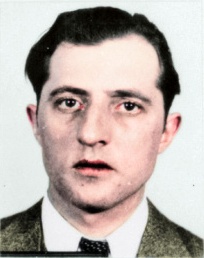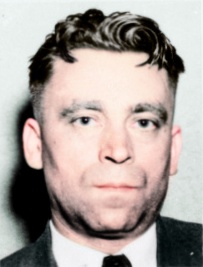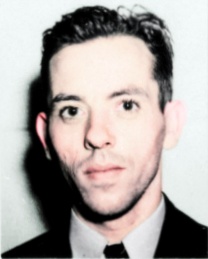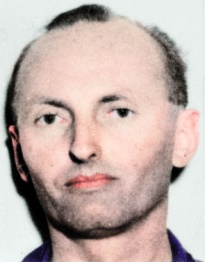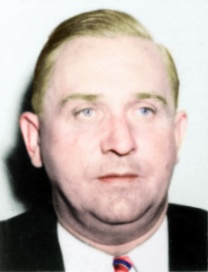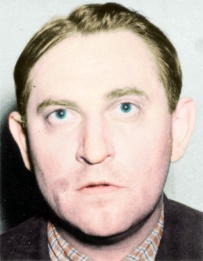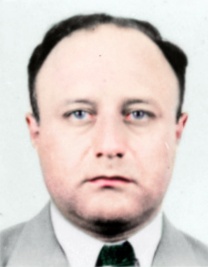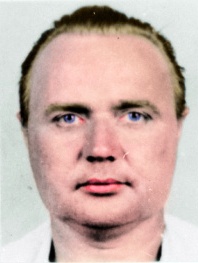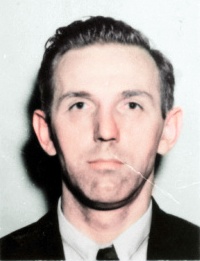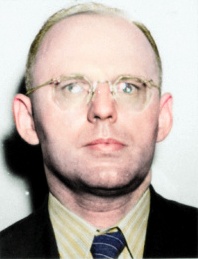The Pittsburgh Press (June 30, 1941)
SEVEN ADMIT THEY SPIED AGAINST U.S.
…
18 others deny guilt; FBI cracks ‘biggest ring’ in nation’s history
…
New York, June 30 (UP) –
Seven persons charged with espionage against the United States pleaded guilty in Brooklyn Federal Court today.
18 others, including two women, arrested in what authorities called “one of the greatest counterespionage efforts ever made by a law enforcement agency,” pleaded innocent.
All 25 were held in $25,000 bail each by United States Commissioner Martin C. Epstein, those who pleaded guilty for grand jury action, the others for hearing July 15.
Those who pleaded guilty were:
-
Lilly Barbara Carola Stein, a German-born artists’ model who moved in high social circles in Manhattan;
-
Hartwig Kleiss of New York;
-
Leo Waalen of New York;
-
Axel Wheeler-Hill, brother of James Wheeler-Hill, former chief aide to Fritz Kuhn of the German-American Bund, of New York;
-
Alfred E. Brokhoff of West New York, N.J.
-
Erwin Wilhelm Siegler and Franz Stigler, who had been held here since June 20 on charges of violating the Alien Registration Act.
Those who admitted their guilt pleaded to charges of conspiracy to transmit to a foreign government (Germany) information on United States defense efforts:
…with the intent that the information be used against the best interest of the United States.
They face a possible maximum sentence of 20 years in prison.
The arrangement followed a round-up by agents of the FBI and the placing of espionage charges against a total of 29 persons, five of whom were already in custody on other charges. 18 of those seized over the weekend were arrested here, four in New Jersey, one in Michigan and one in Wisconsin.
Pleading not guilty
In the group which pleaded not guilty were Frederick Joubert Duquesne, 64, and two men said to have been formerly employed by the Carl L. Norden Co., makers of the famed Norden bombsight, one of the U.S. Army’s closest guarded defense secrets.
These were Herman Lang, a naturalized American citizen born in Schwarzenbach am Wald, Germany, a machinist and draftsman, and Everett Minster Roeder of Merrick, N.Y., an engineer and designer.
The FBI would neither confirm nor deny that they worked for Norden but said Roeder had once been an employee of the Sperry Gyroscope Co., makers of the Sperry bombsight recently given to Great Britain.
The suspects were said to have gathered information on ship movements to Great Britain, on United States defense production and on the development of new and secret military equipment in this country and to have transmitted their discoveries to a foreign power unnamed, but obviously Germany, since that is the native country of 22 of the prisoners.
Three of the 29 were women. In addition to the 18 arrested here, four were seized in New Jersey, one in Michigan and one in Wisconsin. Of the five in jail, four had been charged with violating the Federal Registration Act and one, René Mezenen, a steward on Pan American Airways Transatlantic Clippers, had been arrested June 5 charged with smuggling platinum to Portugal.
Already in custody
Of the five already in custody, four were arrested in New York and one in California, all on other charges. Bertram Wolfgang Zenzinger of Topanga, Cal., was arrested in Los Angeles last April for violating the Alien Registration Act and is serving 18 months in a California prison.
Duquesne, described as the leader, has been a spy for 40 years, FBI agents said. He did espionage in the Boer War, was arrested here in 1919 on a murder and insurance fraud charge in connection with the sinking of the British ship Tennyson, but escaped while confined in Bellevue Hospital. The charge was later dropped. He is described as “a writer, lecturer and professional spy.” A native of South Africa, he is a naturalized American.
Met in restaurant
Their central meeting place was said to have been the Little Casino Restaurant in Yorkville, the German quarter of Manhattan. Richard Eichenlaub, proprietor of the restaurant, a native of Germany, but a naturalized American citizen, was among the prisoners.
Of the long investigation and the sudden round-up of suspects, J. Edgar Hoover, head of the FBI, said only that the “flytrap” method of counterespionage had been used. This method, which he did not explain, “made it possible for us to apprehend such a large number at one time,” he said. He said the magnitude of the case was demonstrated by the fact that there have been only 19 convictions under the Espionage Act since it was enacted in 1917.
There were indications that FBI agents had been close on the heels of the suspects for months and had either prevented them from getting much information of value to a foreign country or arranged for them to get misleading information.
Methods disclosed
The suspects were extremely alert in seeking information about ship departures for Britain, agents said.
Mr. Hoover said that some of the suspects acted as couriers using the Italian LATI airline to South America. Money to maintain the spies was handled through South American banks, he said. Drafts were ordered paid through United States banks to members of the ring, disguised as commercial transactions.
United States flagships to neutral countries were also used by the suspects, and their manner of transmitting information included shortwave radio, messages in secret inks and the making of models of military implements which they attempted to smuggle abroad.
The women arrested were:
-
Else Weustenfeld, 42, stenographer and notary public, sometimes employed in the German Consulate here, a naturalized citizen, native of Essen, Germany, believed to have served as paymaster to the ring;
-
Evelyn Clayton Lewis, 37, who said she was an artist, sculptor and playwright, a native of Fayetteville, Ark., who was said to have assisted Duquesne in directing the ring;
-
Miss Stein, 27, an artists’ model who moved in upper social circles, a native of Vienna, Austria. She had applied for first U.S. naturalization papers.
Former ship’s steward
Heinrich Carl Eilers, 41, a naturalized citizen whom Hoover said was chief of the ring’s transatlantic couriers, was formerly a steward on the United States liner Manhattan. Eilers was a native of Braunschweig, Germany.
Oscar Richard Stabler, native of Stuttgart, Germany, but a naturalized American, arrested in Westwood, N.J., was formerly a barber on the liner Excambion, and Erich Strunck, arrested in Milwaukee, was formerly a waiter on the liner Siboney. Strunck, a naturalized American was born in Altona, Germany.
Edmund Carl Heine, arrested in Pleasant Ridge, Mich., was formerly a representative in Germany for the Ford Motor Co. and the Chrysler Corp. He was born Jan. 20, 1891 in Zeulenroda, Germany, and was a naturalized American.
Records of other suspects:
Max Blank, New York City, German citizen, born Sept. 7, 1902 in Freiberg, Germany. By occupation a bookkeeper and clerk and was employed by the German Library of Information, New York City, which was recently ordered closed by the government.
Rudolf Eberling, New York City, naturalized American, born Nov. 24, 1898 in Wittstock, Germany. By occupation a shipping clerk and foreman.
Josef August Klein, New York City, a German citizen who has filed first U.S. naturalization papers, born Nov. 3, 1903 in Düsseldorf, Germany. By occupation a commercial photographer.
Felix Jahnke, Bronx, New York City, naturalized American citizen, born Dec. 6, 1902 in Breslau, Germany. By occupation a soda dispenser.
Paul Alfred W. Scholz, New York City, a German citizen, born March 15, 1900 in Reichenbach, Germany. By occupation a book salesman for the Germania Book & Specialty Co.
Heinrich Stade, New York City, naturalized American citizen, born Jan. 3, 1901 in Hanover, Germany. By occupation a musician.
Leo Waalen, New York City, a German citizen, born Dec. 7, 1907 in Danzig, Germany. By occupation a painter.
Hartwig Richard Kleiss, New York City, a naturalized American, born Aug. 21, 1896 in Frankfurt, Germany. By occupation a seaman and in the past had been employed on the SS President Harding, SS Manhattan and SS America.
Herman Lang, Glendale, N.Y., born June 12, 1894 in New York City. By occupation an engineer and designer.
Alfred E. Brokhoff, West New York, N.J., naturalized American, born April 17, 1902 in Bielefeld, Germany. By occupation a mechanic employed on piers of the U.S. lines on the New York waterfront. He specialized in getting information about the sailing dates of U.S. ships.
Carl Reuper, Hudson Heights, N.J., naturalized American, born May 3, 1904 in Göttingen, Germany. By occupation a machinist.
Carpenter arrested
George Gottlob Schuh, East Orange, N.J., naturalized American, born Dec. 5, 1886 in Hochdorf, Germany. By occupation a carpenter.
Paul Bante, New York City, a naturalized American citizen, born Nov. 14, 1890 in Lennep, Germany. By occupation an ironworker, tool and die maker.
Everett Minster Roeder, born June 12, 1894 in New York City. By occupation an engineer and designer.
The maximum penalty for espionage is 20 years imprisonment.
The suspects were charged specifically with conspiracy to violate Section 32 of Title 50, U.S.C., making it a crime to unlawfully transmit information affecting national defense and to use the information to the injury of the United States or to the advantage of a foreign nation.


